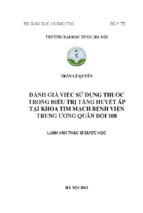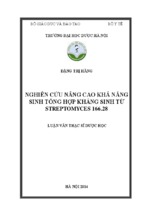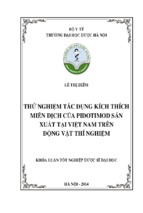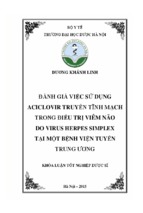C H A P T E R
29
INFERTILITY AND RELATED
ISSUES (SPECIAL FERTILITY
PROCEDURES,
HYPERANDROGENISM)
INFERTILITY
Infertility is defined as the failure to conceive after one year of attempting pregnancy. Primary infertility denotes those patients who
have never conceived. Secondary infertility applies to patients who
have conceived previously. Approximately 15% of couples experience infertility, which may result from subfertility or sterility (the
innate inability to conceive) in either partner or both. The female
is responsible in 40%–50% of cases. The male is responsible in 30%
and is contributory in another 20%–30% of couples. However, it is
crucial to recall that multiple etiologies are found in 40% of infertile couples.
The incidence of infertility has increased (perhaps 100% over
the past 20 years) in developed countries because of increasing
sexually transmitted disease (especially gonorrhea and Chlamydia, causing subsequent tubal damage), an increased number of
sexual partners (increasing the potential for acquiring STDs),
intentionally delaying pregnancy, the contraceptive(s) used, and
smoking (�1 pack/day decreases the chance of pregnancy by
�20%). Infertility accounts for 10%–20% of all gynecologic
office visits.
Fertility rates are established using fecundibility (the chance of
pregnancy per month of exposure). Only 25% of young healthy couples having frequent intercourse will conceive per month (60% by
6 months, 75% by 9 months, and 90% by 18 months). Fecundibility declines with age, and the effect is more pronounced in women
than in men. By 36–37 years of age, the chance of pregnancy is less
than half that at 25–27 years of age.
769
Copyright 2001 The McGraw-Hill Companies. Click Here for Terms of Use.
770
BENSON & PERNOLL’S
HANDBOOK OF OBSTETRICS AND GYNECOLOGY
Careful evaluation should detect probable cause(s) for infertility in 85%–90%. Happily, even without therapy, 15%–20% of infertile couples may be expected to achieve pregnancy over time.
Therapy, excluding in vitro fertilization, will result in pregnancy in
50%–60%.
ETIOLOGY
The causes of infertility may be classified as male-coital factors
(40%), cervical (5%–10%), uterine-tubal (30%), ovulatory factors
(15%–20%), and peritoneal or pelvic factors (40%). A few genetic
causes (e.g., primary amenorrhea) are recognized.
MALE-COITAL FACTORS
Male factors include abnormal spermatogenesis, abnormal motility, anatomic disorders, endocrine disorders, and sexual dysfunction. The anatomic abnormalities possibly responsible are congenital absence of the vas deferens, obstruction of the vas deferens, and
congenital abnormalities of the ejaculatory system.
Abnormal spermatogenesis may occur as the result of mumps
orchitis, chromosomal abnormalities, cryptorchidism, chemical or
radiation exposure, or varicocele. Abnormal motility is seen with
absent cilia (Kartagener’s syndrome), varicocele, and antibody formation.
The male factor endocrine disorders include thyroid disorders,
adrenal hyperplasia, exogenous androgens, hypothalamic dysfunction (Kallmann’s syndrome), pituitary failure (tumor, radiation, surgery), and hyperprolactinemia (tumor, drug-induced). An elevated
FSH commonly indicates parenchymal testicular damage, since inhibin, produced by the Sertoli cells, is the primary feedback control of FSH secretion.
CERVICAL FACTORS
Cervical factors of female infertility may be congenital (DES exposure, mullerian duct abnormality) or acquired (infection, surgical treatment).
UTERINE-TUBAL FACTORS
Uterine-tubal factors are most commonly structural abnormalities
(e.g., DES exposure, myoma, failure of normal fusion of the reproductive tract, infections, previous ectopic pregnancy).
CHAPTER 29
INFERTILITY AND RELATED ISSUES
771
OVULATORY FACTORS
Ovulatory factors involve CNS function, metabolic disease, or peripheral defects. CNS defects include chronic hyperandrogenemic
anovulation, hyperprolactinemia (empty sella, tumor, or druginduced), hypothalamic insufficiency (including Kallmann’s syndrome), and pituitary insufficiency (trauma, tumor, or congenital).
Metabolic diseases causing ovulatory factor defects are thyroid disease, liver disease, renal disease, obesity, and androgen excess (adrenal or neoplastic). Peripheral defects may be gonadal dysgenesis,
premature ovarian failure, ovarian tumor, or ovarian resistance.
PERITONEAL OR PELVIC FACTORS
The two most common pelvic or peritoneal factors are endometriosis and sequelae or infection (e.g., appendicitis, pelvic inflammatory disease). Laparoscopy in women with unexplained infertility
will reveal previously unsuspected pathology in at least 30% of patients. Endometriosis exerts a greater pejorative effect on fertility
than can be explained on the basis of physical alterations
(p. 755).
DIAGNOSIS
Infertility evaluations should follow a progression of testing and
procedures that takes into account probability (including individualization for the couple), invasiveness, risks, and expense. The basic evaluation usually requires 6–8 weeks to complete. Even if the
history suggests a probable cause of infertility, completion of the
evaluation of all major factors should be accomplished to avoid
overlooking a secondary or contributory factor.
The initial assessment should include medical history for female
infertility factors, including pubertal development, present menstrual
cycle characteristics, contraceptive history, prior pregnancy and outcome, previous surgery (especially pelvic), prior infection, abnormal
Pap smears and therapy, drugs and therapy, diet, weight stability, exercise, and history of in utero DES exposure (now rare).
EVALUATION OF MALE FACTORS
The initial test for male infertility is the semen analysis because a
normal semen analysis usually excludes a significant male factor
(Table 29-1). The specimen should be obtained after 2–3 days
abstinence and evaluated in the laboratory within 30–60 min of
ejaculation.
772
BENSON & PERNOLL’S
HANDBOOK OF OBSTETRICS AND GYNECOLOGY
TABLE 29-1
NORMAL SEMEN ANALYSIS VALUES
Parameter
Normal Value
Volume
Viscosity
Count
2–5 ml
Full liquefication �60 min
40–250 M/ml (previously,
down to 20 M/ml)
1st h �60%; 2–3 h �50%
�60%
�35%
�10/hpf
Motility
Normal morphology
Dead sperm
White blood cells
The frequency of male factors (as well as risk and cost effectiveness) mandates male diagnosis in the initial phase of infertility
investigation. The medical history for male factor infertility should
include frequency of intercourse, difficulty with erection or ejaculation, prior paternity, past history of genital tract infections (e.g.,
mumps orchitis or chronic prostatitis), congenital anomalies, surgery or trauma (e.g., hernia repair, direct testicular trauma), exposure to toxins (medications, lead, cadmium, or radiation), diet, exercise, alcohol consumption, smoking �1 pack/d), illicit drug use,
in utero exposure to DES, and unusual exposure to high environmental heat.
The physical examination should consider habitus and hair distribution (e.g., testosterone effect). The urethral meatus should be
in the normal location. Testicular size may be compared to standard
ovoids. Eliciting a Valsalva maneuver in the standing position
should aid in the detection of a varicocele. Transrectal prostatic massage generally will produce sufficient secretions for microscopic
examination. Excessive leukocytes in this or the semen analysis indicate infection.
If the semen analysis is abnormal or borderline, the man’s medical history over the past 2–3 months should be reviewed, recalling
that spermogenesis requires 74 d. A repeat semen analysis should
be performed 1–2 weeks later for comparison. Consider referral to
a urologist specializing in infertility if a significant abnormality persists.
Because sperm must reach the ovum before fertilization can occur, infertility in the presence of normal semen values suggests that
CHAPTER 29
INFERTILITY AND RELATED ISSUES
773
there may be an abnormally high attrition of sperm. Cervical mucus studies may clarify this problem.
In vitro fertilization is the ultimate test for male factor infertility. A sperm penetration test may be useful. This uses a hamster egg
to demonstrate the ability of the sperm to penetrate a zona-free
oocyte using a known fertile donor as control. Abnormality is indicated by �10% penetration. Negative penetration of healthy appearing, mature ova by partner sperm with simultaneous positive
penetration by donor sperm may provide the diagnosis.
EVALUATION OF CERVICAL
FACTORS
Cervical factors are evaluated by physical examination and an appropriately timed postcoital mucus test. History of in utero DES exposure, abnormal Pap smears, cryotherapy, postcoital bleeding, or
conization is suggestive of persistent cervical problems.
Normal cervical mucus in the preovulatory phase is thin, watery and acellular and dries in a ferning pattern. Mucus in this state
acts as a facilitative reservoir for sperm. Cervical mucus is best
evaluated on days 12–14 of a 28 d cycle. The amount and clarity
of the mucus are recorded, and the pH should be �6.5. Spinnbarkeit
(the stretchability of a strand of mucus) is ascertained by drawing
out the mucus vertically (it should stretch to �6 cm).
The Sims-Huhner test evaluates the initial interaction of the
sperm with cervical mucus. The test should be conducted in the
periovular interval. Timing of the test may be enhanced using vaginal ultrasound to determine the presence or absence of a dominant
follicle. Mucus is collected 2–4 h after intercourse. The mucus is
placed on a clean glass slide under a coverslip and observed.
There should be �20 sperm/hpf, and large numbers of active
sperm will be seen in the thin, acellular mucus. Lower numbers
(�20/hpf) of motile sperm in favorable mucus may be present in
normally fertile couples due to the stress of coitus at a prescribed
time. The absence of sperm suggests aspermia or improper coital
technique or specimen collection. Finding an adequate number of
immobile sperm in favorable mucus requires an investigation for
autoantibodies in the male or serum antibodies in the female. If a
sufficient number of sperm are present but poorly motile, further
assessment of the mucus and timing of the test is indicated. If the
mucus tests are repeatedly abnormal despite apparently favorable
mucus, a crosscheck using donor mucus and donor sperm is reasonable. Antibody studies may determine the antigenic site (sperm
head, midpiece, or tail) and are more likely to be positive in men
who have a history of trauma, infection, or previous surgery.
774
BENSON & PERNOLL’S
HANDBOOK OF OBSTETRICS AND GYNECOLOGY
DIAGNOSIS OF UTERINE-TUBAL
FACTORS
Both history and careful pelvic examination are essential initial
steps in detection of uterine-tubal factors. Key details of the history
include menstrual problems, pelvic infections (pelvic pain), STD,
appendicitis, and abdominal trauma or surgery. Suggestive findings
on pelvic examination include uterine irregularities, pelvic masses,
and uterine deviation or fixation.
It is uncommon for submucous myomata, endometrial polyps,
or bicornuate uterus to cause infertility, although each of these is
associated with an enhanced rate of abortion. Tubal fimbrial occlusion is the most common of the three usual locations, followed by
midsegment and isthmus-cornual occlusion. Midsegment occlusion
is nearly always due to tubal sterilization but may be secondary to
tuberculosis. The major causes of isthmic-cornual occlusions are
infection, maldevelopment, endometriosis, adenomyosis, or salpingitis isthmica nodosum.
Hysterosalpingography (HSG) (Fig. 29-1), hysteroscopy, laparoscopy, or a combination of these is required to determine patency of the tubes. HSG is performed as an outpatient procedure using a radiopaque dye (first water-soluble and, after patency is
assured, an oil-based contrast medium) instilled into the uterine cavity via a small transcervical catheter. Radiographs should document
FIGURE 29-1. Hysterosalpingography.
CHAPTER 29
INFERTILITY AND RELATED ISSUES
775
the fluoroscopically observed findings. Uterine contour, tubal patency, and ability of the dye to freely transit the tubes to enter the
pelvis are evaluated. The oil-based dye provides a better image but
has a greater risk of retention and granuloma formation. The water-based dye causes less cramping and allows better definition of
the rugae. Abnormal findings include intrauterine synechiae (Asherman’s syndrome), congenital malformations of the uterus, polyps,
submucous leiomyomas, proximal or distal tubal occlusion, and
salpingitis isthmica nodosa.
The major risk of HSG is infection. Thus, HSG should not be
performed during even suspected active inflammation or when
there is an adnexal mass. Broad-spectrum antibiotic therapy (e.g.,
doxycyline) may be prudent if recent STD screening has not been
performed. The test is also contraindicated if there is allergy to
the dye.
Laparoscopy may demonstrate tubal abnormalities (e.g., agglutinated fimbria, endometriosis) that probably would not be seen on
HSG. Hysteroscopy performed concomitantly with laparoscopy may
give further information regarding uterine contour or polyps. Endometriosis (Chapter 28) is an important cause of infertility and is
suggested by a history of worsening dysmenorrhea or dyspareunia
but usually cannot be diagnosed short of visual inspection. Some
endometriosis may be eliminated during laparoscopic diagnosis if
informed consent has been obtained and preparations have been
made for laser surgery or operative pelviscopy.
Laparoscopy may be indicated relatively early in the investigation of infertility if pelvic factors are suggestive or in older
patients, whereas it may be the last test performed in a young
woman when all other studies are negative. It may be considered
together with ovarian stimulation and ovum collection in longstanding infertility using in vitro fertilization or by placing sperm
and ovum directly into the tube to allow a trial of normal transport
to the uterus.
EVALUATION OF OVULATORY
FACTORS
Ovulating women usually have regular cycles (22–35 d). Substantiating symptoms may be useful, especially premenstrual (breast
changes, bloating, and mood change). The physical examination
and proper timing, coupled with cervical mucus evaluation, may
determine ovulation. Some affirmation of ovulation may be obtained by basal body temperatures (BBTs, see Fig. 26-1) and endometrial biopsy. Currently, measurements of the midluteal serum
progesterone (attempting to detect the surge), as well as serial
776
FIGURE 29-2. Dating the endometrium. Approximate relationship of useful morphologic factors.
(Modified after J.P.A. Latour. From Noyes, Hertig, and Rock, Dating the endometrial biopsy. Fertil Steril 1:3, 1950.)
777
FIGURE 29-2. (Continued)
778
BENSON & PERNOLL’S
HANDBOOK OF OBSTETRICS AND GYNECOLOGY
gonadatropin (FSH and LH) evaluations are more commonly used
to evaluate ovulation.
BBT is taken on awakening before any other activity. After ovulation, a temperature elevation of 0.4�F occurs due to the thermogenic effect of progesterone. Progesterone levels as low as 5 ng/mL
may indicate ovulation, but midluteal levels usually are �10 ng/mL.
Irregular menses, absence of premenstrual molimina, continued
ferning of dried cervical mucus, low midluteal progesterone levels,
and absence of midcycle BBT elevation all indicate probable failure of ovulation. Treatment of ovulation failure is discussed under
therapy. Abnormal BBTs, spontaneous abortion(s), endometriosis,
and poor cervical mucus may indicate a luteal phase defect. Confirmation of this diagnosis is accomplished by endometrial histologic study, including dating of endometrial biopsies (best taken
from the superior, anterior uterine fundus) in relation to menses.
Dating of the endometrium is accomplished by the criteria illustrated in Figure 29-2. Should the histologic date of the biopsy lag
by more than 2 d in two cycles, this diagnosis is confirmed.
An additional ovulatory abnormality is the luteinized unruptured
follicle (LUF) syndrome. In LUF, the oocyte is trapped or not released from the follicle (as determined by laparoscopy) despite indirect signs of ovulation.
When investigating endrocrine associations of infertility, determination of diabetic status as well as any androgen abnormalities
will reveal a significant number of patients with these causes of reproductive dysfunction.
EVALUATION OF PERITONEAL
AND PELVIC FACTORS
In women with unexplained infertility, laparoscopy can identify previously unsuspected pathology in 30%–50% of patients. The most
common condition diagnosed is endometriosis. Other conditions
(e.g., unexpected adhesions) also may be encountered.
TREATMENT
MALE AND COITAL FACTORS
Smoking, alcohol, and drug use should be stopped. Eliminate
sources of increased scrotal temperature (e.g., saunas, hot tubs, or
jockey shorts underwear) with their adverse effect on spermatogenesis. Lubricants and douching should be eliminated. The woman
should lie on her back for at least 15 min following coitus (to
CHAPTER 29
INFERTILITY AND RELATED ISSUES
779
facilitate semen retention and progression). Infrequent or poorly
timed intercourse is a common cause of infertility. Hence, coitus
every 2 d during the periovulatory interval (e.g., days 12–16 of a
28 d cycle) should be advised.
Azoospermia because of chromosomal abnormalities, congenital abnormalities (other than congenital absence of the vas deferens), and elevated FSH cannot be reversed. Therefore, artificial insemination with donor sperm or adoption are the only alternatives.
There have been occasional reports of successful pregnancy in congenital absence of the vas deferens by using sperm aspirated from
the epididymis and in vitro fertilization. Hypothalamic or pituitary
hormone insufficiency-induced azoospermia may be treated by replacement hormone therapy, with varying results. Successful reversal of azoospermia secondary to vasectomy by performance of
a vasovasostomy is influenced by the duration of occlusion and
whether or not autoantibodies have formed. Patency can be achieved
in 75%–90%, with resultant pregnancy rates of 33%–70%.
Varicoceles are present in approximately one third of men evaluated for infertility, and varicocelectomy has been shown to improve sperm parameters in up to two thirds. However, postoperative pregnancy rates in controlled studies reveal no statistical
difference between the treated and untreated.
Low semen volume is a problem notoriously difficult to treat.
This is usually treated by artificial insemination with the man’s
semen (AIH). Here, 0.1 mL of liquefied semen is placed in the
endocervical canal and the rest in a cervical cup. When high semen
volume is accompanied by low sperm count, a split ejaculate
technique may be useful. In this technique, the first portion of the
ejaculate, which has a much higher sperm count, is collected and
used for AIH. If necessary, several first ejaculates may be pooled
and saved by freezing, to be used later for AIH.
Oligospermia (low sperm count) or asthenospermia (low sperm
motility) if due to an endocrinopathy may respond to specific hormonal therapy (e.g., human menopausal gonadotropin—hMG)—for
hypothalamic–pituitary failure, bromocriptine for hyperprolactinemia, or thyroid replacement for hypothyroidism). In idiopathic
oligoasthenospermia, clomiphene (not FDA approved for this purpose) may be useful. When specimen quality cannot be improved
by other means, the semen may be washed and the sperm concentrated into a smaller volume by slow centrifugation. The resultant
semen then is only used for intrauterine insemination accurately
timed by daily LH levels or ovulatory stimulation.
If sperm autoantibodies are present, suppression of the immune
response by steroids may be initiated. However, in vitro fertilization may be necessary in some of these cases to achieve pregnancy.
780
BENSON & PERNOLL’S
HANDBOOK OF OBSTETRICS AND GYNECOLOGY
Intrauterine insemination with washed semen (to eliminate
prostaglandins) has been shown to be effective in cases where the
sperm parameters are normal and the postcoital examinations are
abnormal. This is not true in the reverse instance. If postcoital tests
are normal but the sperm characteristics are not, intrauterine insemination of the abnormal sperm offers little benefit.
In vitro fertilization and gamete intrafallopian transfer (GIFT)
offer therapy most likely to be successful in male factor infertility
with abnormal sperm factors. Both are invasive and expensive procedures. Moreover, several attempts may be necessary to achieve
pregnancy (reported pregnancy rate per cycle is 15%–20%).
CERVICAL FACTORS
If the cervix is abnormal as a result of treatment (e.g., coagulation,
cryotherapy) or congenital malformation, intrauterine insemination
with washed sperm over three cycles should achieve pregnancy in
30%–40%. If cervical mucus is not adequate at midcycle, low-dose
estrogen administered during the mid- to late follicular phase of the
cycle may be effective. Human menopausal gonadotropins may be
necessary to improve the cervical mucus when low-dose estrogen
is ineffective. Nonetheless, close monitoring is recommended to
avoid multiple gestation or hyperstimulation syndrome. If these are
ineffective, intrauterine insemination may be performed. When the
cervical mucus is altered by inflammation or infection, empiric
tetracycline therapy (doxycycline 100 mg bid for both partners) is
advocated.
UTERINE-TUBAL FACTORS
Microsurgical tuboplasty is 60%–80% effective in achieving pregnancy with tubal occlusion. However, correction of isthmic occlusions and neosalpingostomy are significantly less successful. Ectopic gestation occurs in 10% of conceptions after surgical tubal
repair. Fibroids significantly distorting the endometrial cavity or
submucous myomas may warrant removal in the treatment of
infertility. Periadnexal adhesions may be lysed by operative laparoscopy.
OVULATORY FACTORS
When anovulation is the etiology of female factor infertility, successful induction of ovulation will result in pregnancy �1 y in 80%.
If pregnancy does not occur despite documented ovulation, other
factors must be investigated. Ovulation can be induced in 90%–95%
CHAPTER 29
INFERTILITY AND RELATED ISSUES
781
of anovulatory patients, except those with an elevated FSH. An elevated FSH is pathognomonic of ovarian failure or ovarian resistance, and no further testing is warranted. The only hope for pregnancy is embryo or ovum donation. A pregnancy rate of up to 20%
per transfer is likely, but the ethical, psychologic, and legal issues
of this procedure must be considered.
The initial drug used to induce ovulation is clomiphene citrate.
Of anovulatory women whose ovaries are producing estrogen, 70%
will ovulate with this drug. Ideally, it is given for 5 d in the early follicular phase because it acts as an antiestrogen. Ultrasound and hormonal testing may be required to evaluate patient response. Dosage
or timing adjustment or additional hormone therapy (e.g., steroids,
estrogen, or midcycle hCG) may be necessary to achieve success.
Stimulation with human menopausal gonadotropins (hMG) generally is reserved for those who do not respond to clomiphene, those
who respond but no pregnancy results, in cases of hypothalamic insufficiency, or in unexplained infertility. Monitoring of estrogen levels and ultrasonic determination of the number of follicles stimulated as well as the degree of maturity of ova are requisites. Most
often, administration of hCG is necessary to trigger ovulation. Although ovulation can be achieved in 85%–90% using hMG, the risk
of multiple births is 20%.
If investigation reveals an elevated prolactin level, a TSH determination is necessary to rule out hypothyroidism. If present, hypothyroidism should be treated. Many drugs can elevate prolactin
levels, and these should be terminated. After pituitary adenoma and
hypothyroidism have been eliminated in the etiology of elevated
prolactin, bromocriptine therapy may be initiated and continued until pregnancy is confirmed. Despite its use in early pregnancy, there
is no documented increase in the incidence of malformation or spontaneous abortion over that seen in the general population.
If the infertility is secondary to an inadequate luteal phase,
clomiphene may be used successfully in the early follicular phase
to recruit additional follicles (thus enhancing progesterone levels in
the luteal phase). Other methods of therapy to be considered for an
inadequate luteal phase are progesterone supplementation during
the luteal phase and hCG injections.
PERITONEAL AND PELVIC
FACTORS
Endometriosis and the residual of salpingitis are two of the most
common causes of infertility. If medication or conservative surgery
is ineffective in treating endometriosis or adhesive problems (regardless of cause), IVF or GIFT may be offered.
782
BENSON & PERNOLL’S
HANDBOOK OF OBSTETRICS AND GYNECOLOGY
COMBINED FACTORS
When combined factors are documented, therapy can be performed
sequentially or simultaneously depending on individual circumstances.
UNEXPLAINED INFERTILITY
When no etiology for infertility can be found, no specific therapy
is likely to be successful. Even without therapy, the couple can be
given the statistical chance of pregnancy of 60% within 3–5 years.
If age is a factor or infertility has been long-standing, advanced reproductive technologies warrant discussion with the involved couple. The option of giving hMG (Pergonal) combined with timed inseminations offers some hope short of IVF. If the former is
unsuccessful, IVF should be offered.
PSYCHOLOGIC ASPECTS OF INFERTILITY
Infertile couples need considerable psychologic support. Infertility
may engender feelings of inadequacy, loss of self-image, or fears
regarding their own sexuality. This is particularly true of the one
found to be infertile. Anger, accusations, or depression may predominate as frustration and disappointment recur on a monthly basis when pregnancy is not achieved. Some may become so obsessed
with basal body temperatures, timed intercourse, and other aspects
of therapy that the couple’s interpersonal relationship suffers. An
additional burden or stress may be the expense of investigation and
therapy. Many insurance carriers pay little or nothing toward the
expense involved.
Infertility can engender the progression through all of the phases
of the grief reaction: denial, anger, bargaining, depression, and acceptance. Many couples become willing to try any technique that
they may read or hear about, especially from well-meaning friends
or relatives. Support groups may be of help—the national organization RESOLVE can provide informal support and referral for professional counseling.
Emphasize the fact that unlike many disorders (e.g., appendicitis), infertility can rarely be reversed overnight and that the couple
should accept a process that may take months rather than days or
weeks to diagnose and treat. Pregnancy usually occurs in 6–9 cycles if a true cause can be found. A time limit must be set for the
expected resolution of the problem to avoid endless procedures or
regimens delaying acceptance of failure and initiation of alternatives (e.g., acceptance of childlessness or adoption).
CHAPTER 29
INFERTILITY AND RELATED ISSUES
783
ASSISTED REPRODUCTIVE
TECHNOLOGY (ART)
IN VITRO FERTILIZATION
In vitro fertilization-embryo transfer (IVF-ET) is the technique of
removing the ovum (egg) from the ovary, fertilizing it in the laboratory, then placing the resulting embryo into the uterus. Since the
first IVF-ET success in 1978, it has become invaluable in the treatment of otherwise untreatable infertility. Success in achieving pregnancy after ovum retrieval is 15%–20% per cycle, and 70%–80%
of those carry the pregnancy to term. The usual indications for IVFET are bilateral tubal abnormality (e.g., postsalpingectomy, post
severe salpingitis), antisperm antibodies, extensive endometriosis,
oligospermia, and long-standing unexplained infertility.
TECHNIQUE
Superovulation
Several methods may be used, including (alone or in combination)
luprolide acetate, clomiphene citrate, hMG, hFSH, and GnRH.
Ultrasound Scans
Determining the number and growth of ovarian follicles is necessary, since at least 2–3 follicles should be developing simultaneously to enhance the possibility of successful ovum retrieval.
Hormonal Monitoring
Serum estradiol levels are useful in predicting which cycle is most
likely to result in pregnancy. LH levels are closely followed because
an unexpected LH peak may result in ovulation before a scheduled
ovum aspiration.
Ova Retrieval
Ova are aspirated 24–36 h after injection of hCG or the onset of
a spontaneous LH surge. Aspiration may be accomplished via
laparoscopy or under indirect visualization using ultrasound and a
percutaneous-transvesical or transvaginal approach. The advantage
of the ultrasonographic technique is that this program may be outpatient oriented and there is no need for anesthesia. After the ovary
is identified, each preovulatory follicle is punctured, and the contents are aspirated. The aspirate is immediately transferred to the
laboratory.
784
BENSON & PERNOLL’S
HANDBOOK OF OBSTETRICS AND GYNECOLOGY
Ova Identification and Classification
The ova are identified microscopically and classified as mature (expanded cumulus oophorus) or immature (compact cumulus). Mature ova have undergone the first meiotic division and are fertilized
5 h after aspiration. Immature ova may be incubated for up to 36 h
before fertilization.
Sperm Capacitation
Because freshly ejaculated sperm cannot fertilize an ovum, the
sperm must be capacitated by a short incubation in culture medium.
Fertilization
With each ovum are mixed 10,000–50,000 motile sperm, and incubation is initiated.
Incubation
An atmosphere of 5%–20% O2 and 5% CO2 and culture medium
supplemented by maternal serum or human cord serum are used for
incubation. During incubation, the preparation is examined for the
presence of pronuclei (fertilization has occurred) or blastomeres
(cleavage has occurred).
Embryo Transfer
The fertilized ova are placed in the uterus after 48–72 h incubation, usually at the 2-cell to 8-cell stage, although more recently
many are awaiting blastocyst stage for embryo transfer. This is accomplished by aspiration of the ova into a small catheter, which is
then passed transcervically. The ova are injected into the uterine
cavity to complete the process.
Potential complications of the procedure are those associated
with anesthesia and laparoscopy and those of any pregnancy. For
example, ectopic pregnancy may occur. Because of the increased
risk of multiple gestation with subsequent fetal wastage, most centers implant only three to four embryos a cycle. If there are excess
fertilized ova, the options include freezing (for later use or donation to another infertility patient), discarding them (unwise), or experimentation (controversial).
OVUM TRANSFER
Ovum transfer is removal of an ovum from a fertile woman after
insemination (usually by an infertile woman’s husband) at the time
of ovulation (LH peak). The ovum donor and the recipient must
ovulate within 2 days of each other. Three to 4 days after insemination, the uterus of the donor is lavaged to attempt ovum retrieval
(hopefully fertilized). Because the process is patented, the technique
CHAPTER 29
INFERTILITY AND RELATED ISSUES
785
may be performed only in clinics licensed to do so. The major complication is failure to lavage a fertilized ovum from the donor, resulting in undesired pregnancy.
GAMETE AND ZYGOTE
INTRAFALLOPIAN TUBE TRANSFER
(GIFT, ZIFT)
Both GIFT and ZIFT are used only in patients with patent uterine
tubes. GIFT is usually accomplished with superovulation. The ova
are collected, ova and sperm are mixed, and then immediately
placed into the uterine tube, where natural fertilization can occur.
In ZIFT the process is similar to IVF-ET, except the zygote is transferred into the fallopian tube as opposed to the uterus.
OUTCOMES OF ASSISTED REPRODUCTIVE
TECHNOLOGY
Annually, the United States Assisted Reproductive Technology
results are reported from the American Society for Reproductive
Medicine and the Society for Assisted Reproductive Technology’s
Registry in the journal Fertility and Sterility. The interested
reader is referred to this source for timely information. Recent
trends indicate: an increasing number of programs reporting assisted reproductive technology treatment, an increase in reported
cycles, and increasing overall success rates (as measured by deliveries per retrieval). In 1996 (at the time of writing the latest
data available), 300 assisted reproductive technology programs
(likely all of the U.S. centers) contributed data to the registry, revealing the following:
●
●
●
●
●
●
●
65,863 total assisted reproductive technology cycles (average
of 219.5 cycles per program) were performed.
44,647 cycles were IVF (with and without micromanipulation—ICSI) with 26.0% deliveries per retrieval.
2879 cycles of gamete intrafallopian transfer (GIFT) resulted in 29.0% deliveries per retrieval.
1200 cycles of zygote intrafallopian transfer (ZIFT) were
performed with 30.9% deliveries per retrieval.
9610 frozen embryo transfers (FET) resulted in 16.8% deliveries per transfer.
3768 donor oocyte cycles had an overall success of 39.1%
deliveries per transfer.
1076 cryopreserved embryo transfers from donated oocytes
resulted in 20.8% deliveries per transfer.
786
●
●
●
BENSON & PERNOLL’S
HANDBOOK OF OBSTETRICS AND GYNECOLOGY
688 assisted reproductive technology cycles using a host
uterus resulted in 31.3% deliveries per embryo transfer.
1341 cycles were reported as combinations of more than one
treatment type.
Overall 14,702 deliveries were reported resulting in 21,196
neonates.
These pooled data do not define variation in the patient characteristics known to affect prognosis, including (but not limited to):
maternal age, the duration of infertility, the presumed cause(s) of
infertility, the patient’s prior history of treatment of infertility, and
diethylstilbestrol exposure. As such, the pooled data should be used
with caution in counseling individual patients for their characteristics may alter prognosis more than the particular assisted reproductive technology employed.
The complex process of assisted reproductive technology is
costly, involving: history, physical examination, endocrine testing
with rapid turn around times, ultrasonic monitoring of follicle ripening, surgical fees, gamete and embryo laboratory fees, anesthesia,
facility use fees, and medications. The expenses vary per condition
and per technique as well as not being comparably reported. Therefore, only a gross estimate of cost per cycle is possible, probably being between $7,000–12,000. Infertility diagnostic and therapeutic
techniques are generally not covered by traditional payers; therefore, most patients usually pay directly. Undoubtedly this decreases
utilization by those without sufficient economic resources. Thus, it
is difficult to assess utilization strictly on a population base. In countries where there is payer coverage for infertility (e.g., Denmark),
IVF has been utilized up to 6500 cycles per 1 million women in the
reproductive age.
HYPERANDROGENISM
The primary androgen produced by the ovaries is androstenedione,
and the primary androgen from adrenal glands is dehydroepiandrostene sulfate (DHEAS). Androgen production in the
ovary is stimulated by pituitary LH and in the adrenal is stimulated
by pituitary ACTH. Most androgens are bound to specific proteins
in the circulation and, while bound, are largely biologically inactive. On reaching the target tissue, androgens are further metabolized, often regaining biologic activity. For example, testosterone
is 99% bound while in the circulation but, on reaching the skin, is
converted to dihydrotestosterone (by 5 a-reductase), an even more
potent androgen than testosterone. The sebaceous glands are very
sensitive to androgens, and oily skin and acne are early signs
of hyperandrogenism. The hair follicle is moderately responsive
CHAPTER 29
INFERTILITY AND RELATED ISSUES
787
to androgens, and hirsutism is a further response to increasing
androgenicity. Finally, with marked androgenicity, signs of masculinization appear in the woman (virilization). These include temporal balding, deepening of the voice, breast atrophy, increased
muscle mass with loss of female body contour, male type pubic hair
pattern, and cliteromegaly.
The total testosterone produced by a mature female is 0.35
mg/day. Ovarian secretion accounts for 0.1 mg, 0.2 mg comes from
peripheral conversion of androstenedione, and 0.05 mg is from peripheral conversion of DHEAS. The ovary and adrenal gland secrete about equal amounts of androstenedione and DHEA. Thus,
about two thirds of a woman’s daily testosterone comes from the
ovaries. Therefore, increased levels of testosterone suggest an ovarian origin. Hyperandrogenism may be associated with several disorders.
POLYCYSTIC OVARIES
(PCO, POLYCYSTIC SYNDROME [PCOS],
STEIN-LEVINTHAL SYNDROME)
Polycystic ovaries are the most common cause of female hyperandrogenism. The etiology of PCO is unknown, but heredity, central
catecholamine abnormalities, obesity, and stress are associated factors. The most common symptom is infertility, which occurs in
75% of patients. Other manifestations of PCO include hirsutism
(70%), menstrual irregularities (amenorrhea 50%, functional bleeding 30%, and dysmenorrhea 25%), obesity (40%), insulin resistance,
and virilization (20%). Only 15% of those with PCO will have
biphasic body temperature, and even less will have cyclic menses.
A feature of PCO is enlarged ovaries (often 5 cm) that have
a smooth, white, thickened pseudocapsule, immediately beneath
which are numerous follicular cysts surrounded by hyperplastic
luteinized theca interna cells.
PCO is marked by increased gonadotropin-releasing hormone
(GnRH) pulse frequency and tonically elevated levels of LH (generally �20 mIU/mL). Estradiol not bound to sex hormone-binding
globulin (SHBG) is increased (total estradiol is not) because of a
decreased SHBG (due to increased androgen levels and obesity),
which stimulates GnRH pulsatility. This results in androgen excess
(from both ovaries and adrenals) and anovulation. However, the hyperandrogenism is mild (if elevated, testosterone 70–120 ng/dL and
androstenedione 3–5 ng/dL); about one half have elevated DHEAS
levels.
Because the FSH levels are usually low, an LH/FSH ratio �3
may be useful in diagnosis of PCO (when LH is �8 mIU/dL).
TABLE 29-2
PROBABLE INTERRELATIONSHIPS IN PCOSa
788
Hypothalamus
Pituitary
Ovaries/
Adrenals
Circulation
GnRH
pulsatility
↑ LH
↓ E2
↑T
↓ Unbound E2
↓ SHBG
↑A2
↑Unbound
T � A2
Result
Excess
androgen
Anovulation
LH/FSH
ratio �2–3
a
GnRH, gonadotropin-releasing hormone; LH, luteinizing hormone; FSH, follicle-stimulating hormone; E2, estradiol; T, testosterone; A2, androstenediol; SHBG, sex hormone-binding globulin.
- Xem thêm -




















